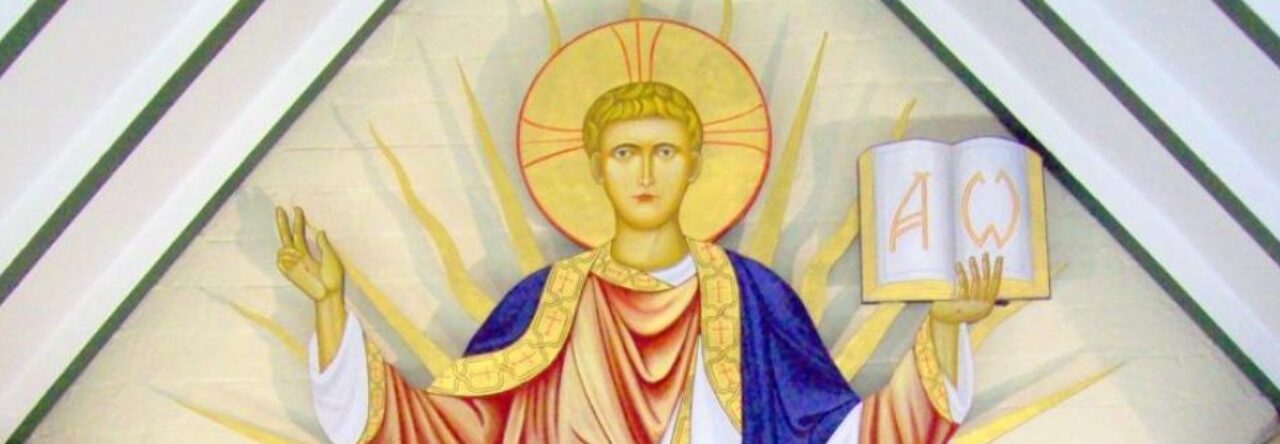Dear friends,
I recently did a funeral visit to a family in the parish. During the conversation, the grand-daughter came home from school dressed in some outrageous (to me) outfit. Apparently it was “Book Day” or some such title. The children in school were expected to turn up dressed as their favourite character from a book. I can’t remember who the child was meant to be but I do remember that it cost the parents (or grandparents) about £20 for the outfit. Thinking positively, I did wonder if it would be better for the school to have a dressing-up box for the children to pick out a character for the day – and then return it to the box for another occasion. I suspect that the logistics would be overwhelming. It does, however, raise the issue of the pressure now put on those who care for children to rise to the occasion. “No uniform day” demands a forfeit. School proms (hmmm!) cost parents vast amounts of money. The alternative is the child who stands on the margins because there simply isn’t the money or expertise to fulfil the corporate demand. I can still remember my brother and I dropping the school trip return forms in the bin on the way home from school. Fortunately, there were quite a few of us who didn’t have the money so we didn’t stand out. (Although saddened by a recent newspaper report of a young man who had died during a school holiday in South America, even now I can feel resentment at the “haves” who can afford such exotic trips.) The danger, of course, is of parents and others going into debt in order to fulfil the demands.
I write this, not least because of that funeral visit, but also because of the growing demand to “fix” the date of Easter. Even I, as a very conservative Christian, have been irritated by Easter falling early in the year. Yet aren’t we meant to be inconvenienced by God? The date of Easter is determined by the lunar calendar – just as the Jewish calendar is so ordered. Apparently, the chocolate egg manufacturers, among others, want a fixed date or day so that the marketing is easier, not to mention the flower growers who also like a late Mothering Sunday as well as Easter itself. There was a time when Whitsunday (Pentecost) was followed by Whitmonday (or is it Whit Monday?) which was a bank holiday. This annoyed someone because Whitsunday is always fifty days after Easter Sunday. In other words, a moveable feast. These days it is tidied up and is always the last Monday in May – which is sometimes the old Whitmonday when the feast and bank holiday coincide.
So what is this month’s gripe? The pressure put on people to fulfil an increasing number of demands put on them by those who want to make money. It started with Christmass Cards – then Easter Cards – then bought flowers at a funeral – excessive presents – wedding lists (thought useful, I have to admit) – Hallowe’en outfits – grandparents days on the back of so-called Mother’s Day. I am sure you could add your own overblown events which came from nowhere and now add to the pressure of life and purse.
We are told in holy writ that “the Son of Man had nowhere to lay his head”. He was not encumbered by “stuff”. We are. There must be something in our nature which the Lord calls us to battle against. I tend to have more food in the cupboard than I actually need. I will get fresh ingredients for a meal, knowing that there is something perfectly acceptable in the freezer. A friend has multiple versions of a symphony in his CD collection, knowing that he will never listen to all of them more than once in his remaining years – if that. (At least computers have made us less possessive of “things” – unless Amazon bids us to click with a small, deft, and often, unthinking action!)
THE parable of the man who tore down his smaller barns and built bigger ones to store his grain (riches) so that he could sit back and enjoy life (Luke 12:13-21) is one I hear all the time. “He had a wonderful pension-pot, bought a nice property in Spain, kept his house back here etc. etc. Everything wonderful – and then…”
“Live this day as it were thy last.” goes an old hymn. Wonderful words. Live each day to the full – enjoy every moment – and look forward to the Glory by being prepared and penitent. “Don’t let the sun go down on your wrath.” it says in the Bible. Put things right if you can – or find the best opportune moment. Meanwhile, accept that not everything can be put right. Just because you have said “Sorry.” doesn’t mean that the other person is bound or able to forgive.
Finally, I mentioned about Catholic “givens” in my last letter. I’m afraid that my experience of the Swanwick Clergy Conference was top-notch in the speakers, fellowship, drink and evening worship. The masses, on the other hand, seemed to be without logic, order or respect for tradition. It made me realise how a lack of respect for “what the Church has always done” can only lead to the cult of what I like rather than obedience.
Enjoy the rest of Eastertide, Mary’s month of May – and the feasts.
